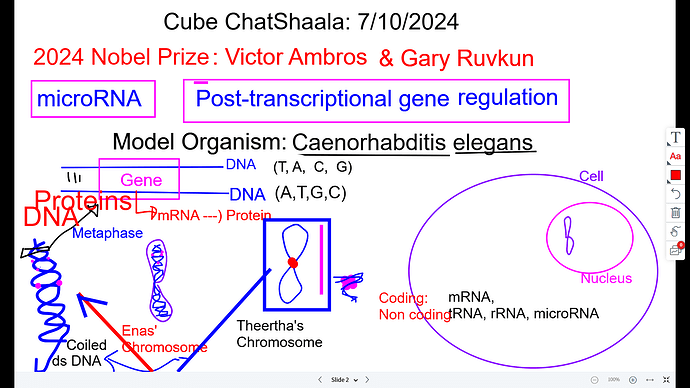On October 7, 2024, two US scientists, Victor Ambros and Gary Ruvkun, were awarded the Nobel Prize in Physiology or Medicine for their discovery of microRNA and its role in post-transcriptional gene regulation in Caenorhabditis elegans.
We started the CUBE ChatShaala with the basics of genetics. First, we talked about a gene, which is a small part of DNA made up of a sequence of A, T, G, and C. This sequence gets expressed to make RNA. Then, we talked about chromosomes and how they look.
A chromosome contains double-stranded DNA (dsDNA), which is coiled and packed with the help of proteins like histones. The centromere is a tightly packed part of the chromosome, where DNA is very condensed. It also has proteins like kinetochore that help in separating chromosomes during cell division.
Further there some more questions we wanted to discuss:
• How does a gene get expressed?
• How do we identify a specific sequence of double-stranded DNA (dsDNA) as a gene?
• What is a promoter?
Is the promoter located inside or outside the gene?
• How do we identify a promoter, and how does this help in finding a gene?
When a gene is expressed, it produces some type of RNA. If it forms mRNA, this RNA is then translated into a protein with the help of tRNA. There are two main types of RNA: coding RNA, like mRNA, which is used to make proteins, and non-coding RNA, which doesn’t make proteins. Non-coding RNA includes rRNA, tRNA, and microRNA. Non-coding RNA can come from genes or be formed during splicing. MicroRNA can bind to mRNA and stop protein production, which is how it plays a key role in post-transcriptional gene regulation.
